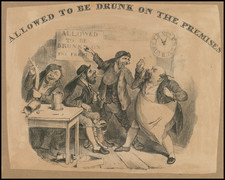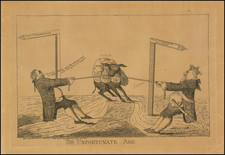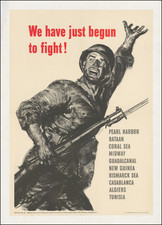A satirical etching by William Dent, The Free-Born Briton or a Perspective of Taxation, captures the oppressive weight of multiple taxes levied on the English populace in 1786, symbolized by the beleaguered figure of John Bull burdened under an array of duties and levies.
During the late 18th century, Britain faced substantial national debt incurred from prolonged military engagements and expanding colonial ambitions. The government sought to mitigate this debt through a series of taxes on various goods and services. These taxes, however, were deeply unpopular and perceived as oppressive by the public, leading to widespread discontent. Satirical artists like William Dent utilized their craft to critique and illustrate the public’s plight under such fiscal policies.
In this etching, John Bull, a personification of the average Englishman, is depicted under severe strain, weighed down by two large yokes labeled "National Debt &c" and "Civil List &c". These yokes are festooned with various symbols of taxation, indicating the myriad ways in which the state extracted revenue. From customs duties on essential commodities like wine, cloth, leather, and salt, to excise taxes on goods such as beer, tea, and tobacco, John Bull’s every move is encumbered by financial obligations.
The figure’s exaggerated, beleaguered posture, with his shouting mouth and stamped limbs, accentuates his helpless rage and frustration. Around him, buildings themselves bear the brunt of taxation, with inscriptions like "Tile Tax," "Brick Tax," "Window Tax," and "House Tax" covering their facades, illustrating how taxes permeate every aspect of life. A crocodile labeled "New Taxes" adds a sinister touch, suggesting the ever-looming threat of additional levies.
The Free-Born Briton or a Perspective of Taxation stands as a testament to the power of satirical art in political commentary. Dent's etching not only provides insight into the specific grievances of the late 18th-century English public but also underscores the broader implications of taxation on societal morale and stability. This piece remains a compelling artifact for collectors and historians, offering a vivid snapshot of the era’s socio-economic climate.












![[ The Dying Bubble-Lord in the Lap of Madame Compagnie ] De stervende Bubbel-Heer in den schoot van Madame Compagne](https://storage.googleapis.com/raremaps/img/small/104094.jpg)

![[ Anti-Communist Italian Propaganda Poster ] Bilancio 1949: la ricostruzione si avvia al termine](https://storage.googleapis.com/raremaps/img/small/105138.jpg)